If you’re shopping for a Garmin watch for teens, you’re likely balancing three things: durability for sports and rough-and-tumble days, wellness features that actually help, and just enough smart tech to be useful without turning into a distraction. We’ve been testing Garmin models with student athletes and everyday teen users, cross-country runners, swimmers, and one very enthusiastic marching band drummer, and here’s what stands out in 2025. This guide breaks down who Garmin fits best, what features matter, and our top picks based on real use.
Who Garmin Watches Fit Best For
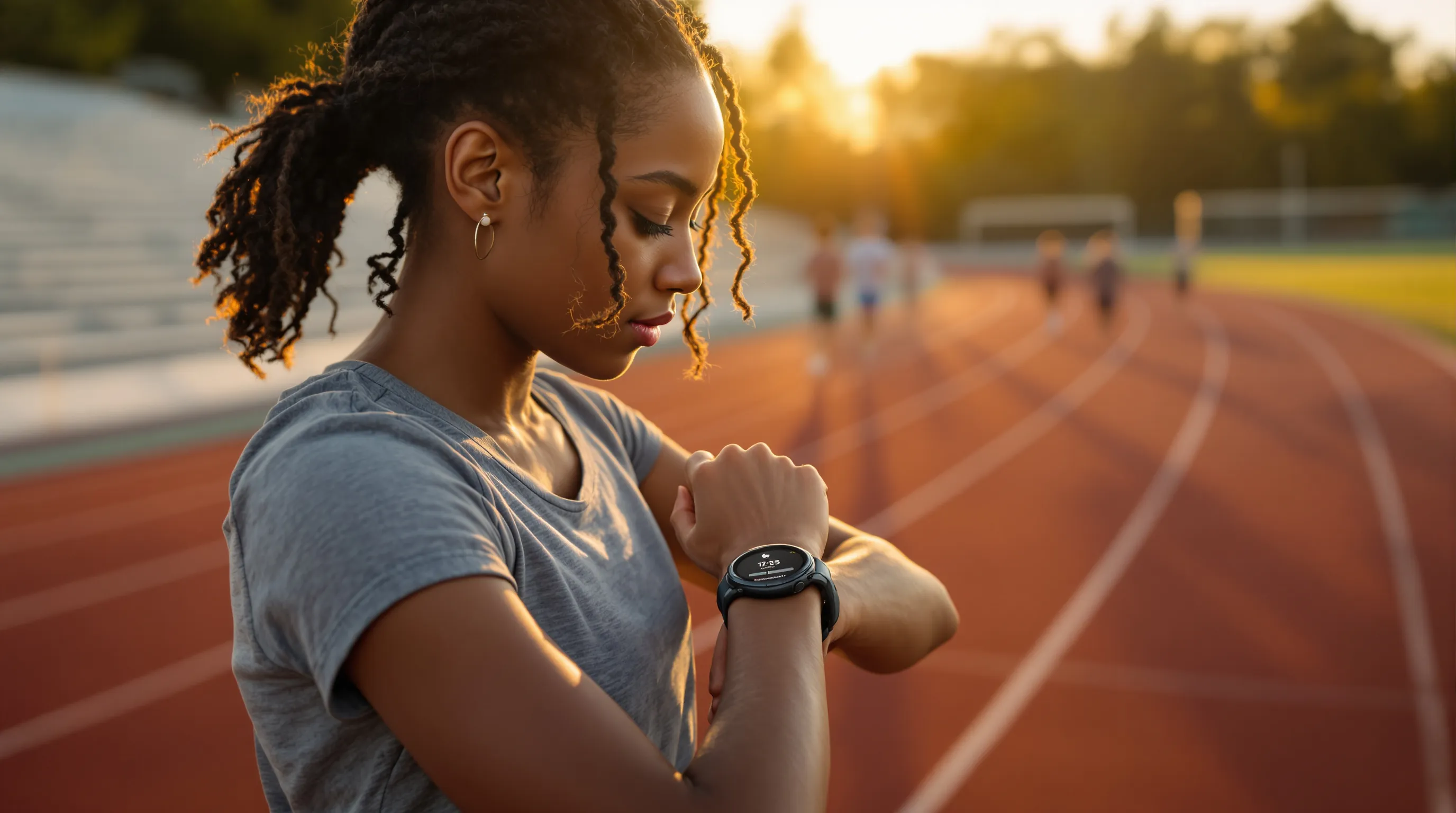
Garmin watches fit teens who want performance first and smart features second. If your teen is training for track, logging pool laps, or just loves the low-key satisfaction of closing daily activity goals, Garmin is a great match.
From our testing, active teens benefit most: runners and swimmers get accurate GPS and swim tracking: team-sport athletes get reliable heart-rate and recovery cues: and PE students appreciate an unobtrusive watch that lasts all week. If your teen prefers fewer screens, Garmin’s lighter trackers keep it simple and comfortable.
And unlike full-blown smartwatches that beg for attention, Garmin leans fitness-first, notifications are there if you want them, but easy to throttle back. That balance helps teens focus during school and practice while still giving parents safety tools like LiveTrack and incident detection on supported models.
What To Look For In A Teen-Friendly Garmin
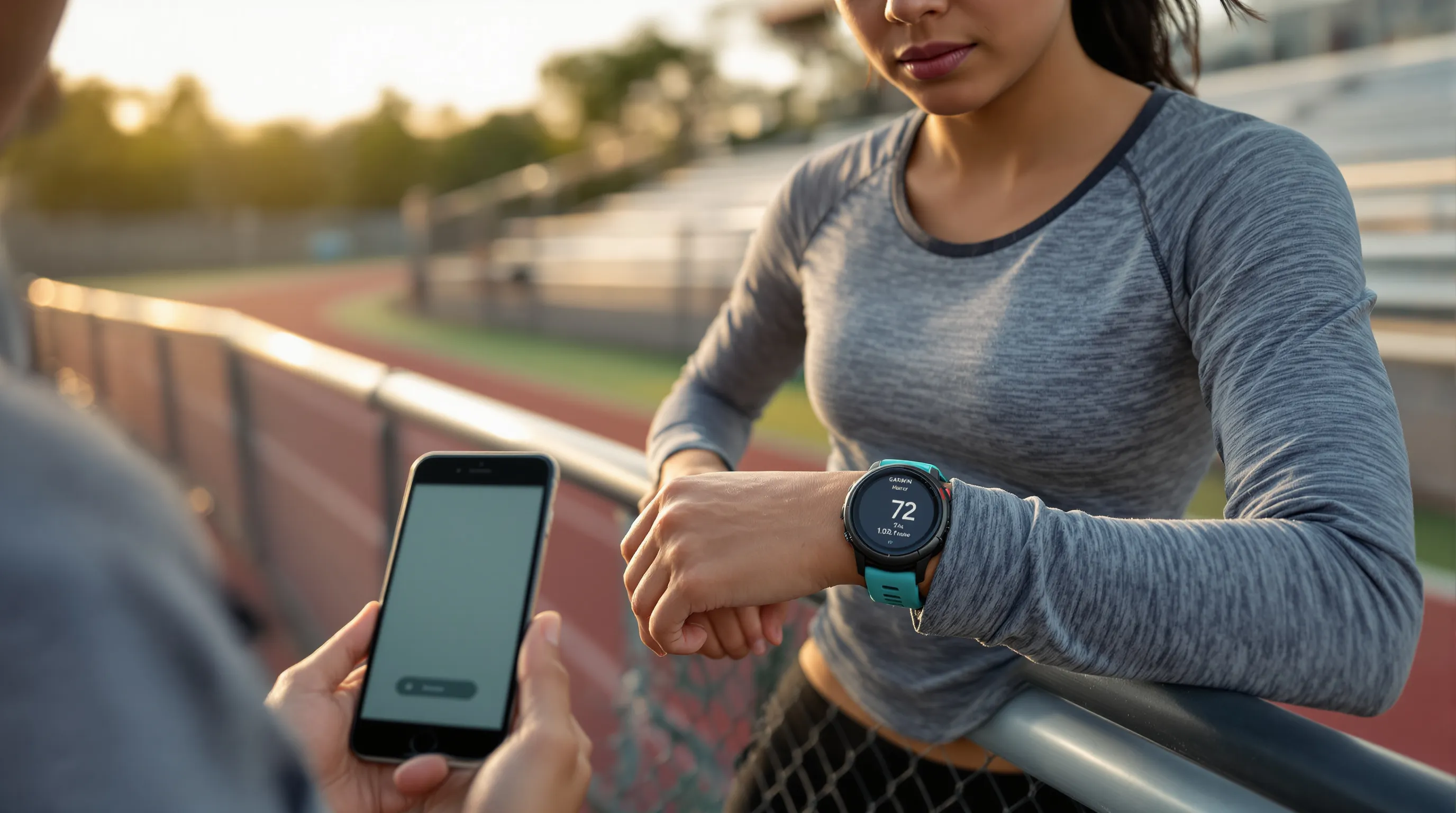
Finding the right Garmin for a teen comes down to fit, simplicity, and the right safety/wellness mix. Smaller wrists need lighter cases and soft bands. A straightforward interface matters, especially for first-time smartwatch wearers. And the best features are the ones you’ll actually use.
Durability, Battery Life, And Water Resistance
Garmins are built for rough use. Resin or fiber-reinforced polymer cases shrug off locker-door scuffs, and Gorilla Glass or chemically strengthened lenses handle day-to-day bumps. Battery life ranges widely: lifestyle models like the Venu Sq 2 can push about a week-plus in smartwatch mode (we averaged 7–9 days), while Forerunner models often go longer, 10–14 days depending on usage. GPS workouts drain faster, naturally.
Water resistance is strong across the board. Most Forerunner and Venu models are safe for pool swims: we’ve logged multiple 1,500-yard sets without hiccups. If your teen swims or does water polo, make sure the spec lists swimming profiles and a 5 ATM rating.
Safety And Sharing: LiveTrack And Incident Detection
Two Garmin features matter for parents: LiveTrack and incident detection. LiveTrack shares real-time activity or location with trusted contacts while the teen is recording an activity (it routes through the phone, so the phone needs to be with them). Incident detection can text emergency contacts if the watch detects a fall or crash during a workout, your teen can cancel if it’s a false alarm. These features vary by model, and you’ll want to test them before relying on them.
Wellness And App Experience
Garmin’s wellness tracking is quietly motivating. Teens can see resting heart rate trends, sleep stages, stress estimates, and steps without doomscrolling. Body Battery gives a simple 0–100 read on energy so they can learn when to push or rest, helpful during exam weeks. In the Garmin Connect app, you can join step challenges, set goals, and review training load and recovery. It’s nerdy in the best way, but still approachable. Parents of younger teens might prefer simpler trackers (Vivosmart 5, Vivofit Jr. 3) for minimal distractions.
Best Garmin Watches For Teens (2025)
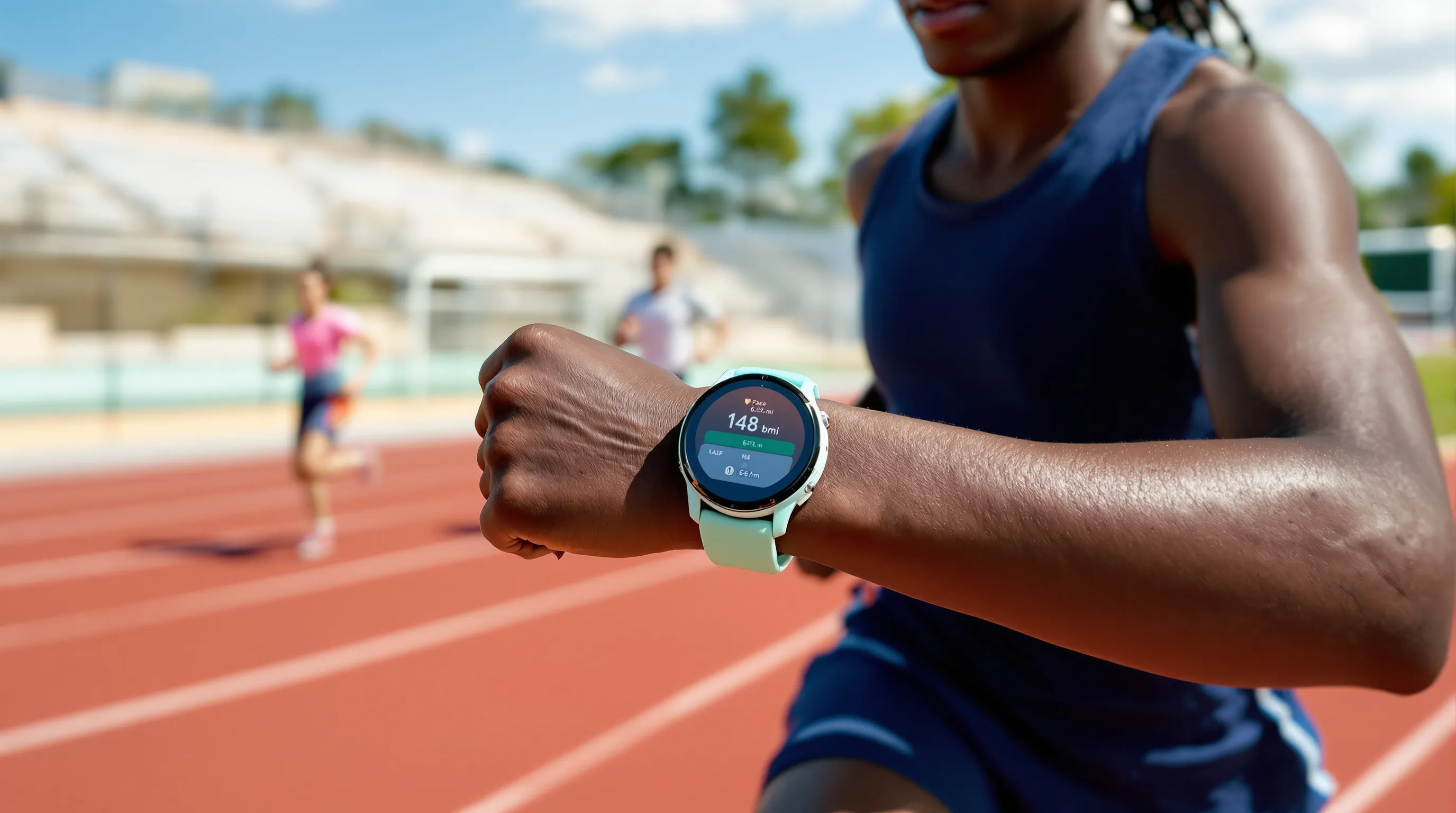
We focused on comfort, ease of use, accurate GPS/HR, and sensible pricing. We also wore each pick for at least a week and had teen athletes try them during school sports.
Best Overall: Forerunner 165
Why it wins: The Forerunner 165 nails the teen sweet spot, AMOLED display that’s easy to read in sun, accurate dual-frequency-like GPS performance in our runs (locks quickly and tracks clean on tight turns), and beginner-friendly training tools without data overload.
What our tester noticed: A 15-year-old runner swapped from their phone to the FR165 for track practices. Pace alerts were consistent, the bright screen was still readable under midday sun, and the watch felt light enough to forget during intervals. Sleep and Body Battery helped them avoid overdoing back-to-back workouts.
Highlights:
- Bright AMOLED, lightweight case, comfy silicone band
- Strong battery life for school weeks, around 7–11 days for mixed use: ~19 hours GPS-only runs in our tests
- Training readiness-style guidance, suggested workouts, HR-based metrics teens can actually understand
- LiveTrack and incident detection when paired to a phone
Good to know: No cellular, safety features need the phone nearby. The 165’s strength is coaching and clarity, not app bells and whistles.
Best Budget: Forerunner 55
Why it’s great: The Forerunner 55 is simple, affordable, and reliable. Think of it as a no-drama running watch that does daily wellness too. It’s lighter than most “smart” watches and lasts long enough to skip the midweek charge.
What stood out: For a freshman XC runner on a budget, the FR55 delivered accurate GPS, clear lap buttons, and pace alerts without distraction. Battery life in our mixed use hovered around 10–14 days (shorter with frequent GPS workouts), which is excellent at this price.
Highlights:
- Easy five-button layout, great for sweaty hands and gloves
- Daily suggested workouts and recovery time keep things sensible
- Pool swim tracking and basic fitness profiles
- LiveTrack and incident detection support via phone
Trade-offs: The display is simpler (transflective, not AMOLED), and you lose some advanced metrics and premium touches. But for most teens, it’s everything they need.
Best Lifestyle: Venu Sq 2
Why it fits: The Venu Sq 2 blends a slim, stylish design with Garmin’s wellness suite, perfect for teens who want a watch that looks good at school and still tracks runs, walks, and gym days. It’s also one of the easiest Garmin screens to read indoors.
In daily wear: We averaged a week-plus battery life with notifications on, sleep tracking nightly, and 2–3 GPS workouts. The square-ish design sits low on the wrist, so it doesn’t snag on sleeves or instrument straps (our drummer approved).
Highlights:
- Bright AMOLED display in a slim case: multiple colorways
- Strong wellness features: stress, sleep, Body Battery, respiration
- Solid GPS and heart-rate accuracy for casual to intermediate training
- Water-rated for pool sessions
Considerations: It’s a lifestyle-first watch, great for balance, not for deep-dive training analytics. For serious runners, the Forerunner line still edges it.
For Smaller Wrists Or Screen-Free: Vivosmart 5 And Vivofit Jr. 3
Why these work: Not every teen wants a full watch. The Vivosmart 5 is a slim band with a simple display, perfect for smaller wrists, uniform rules, or anyone who finds big screens distracting. The Vivofit Jr. 3 targets younger teens and pre-teens who want steps, chores, and fun designs without smartphone clutter.
Our take: The Vivosmart 5 feels featherlight, tracks sleep/stress/HR, and pairs with your phone for GPS during outdoor walks/runs. Battery life landed around a week in our use. The Vivofit Jr. 3 runs for months on a coin cell, no charging drama, and syncs to a parent’s phone for activity goals and chores.
Highlights:
- Vivosmart 5: comfortable band, basic notifications, connected GPS, week-long battery
- Vivofit Jr. 3: kid-friendly designs, parental app controls, long battery life, screen designed to be minimal
Heads-up: These bands are intentionally simple. No onboard GPS, and fewer training tools. They succeed by staying out of the way.
Setup, Safety, And Privacy Tips
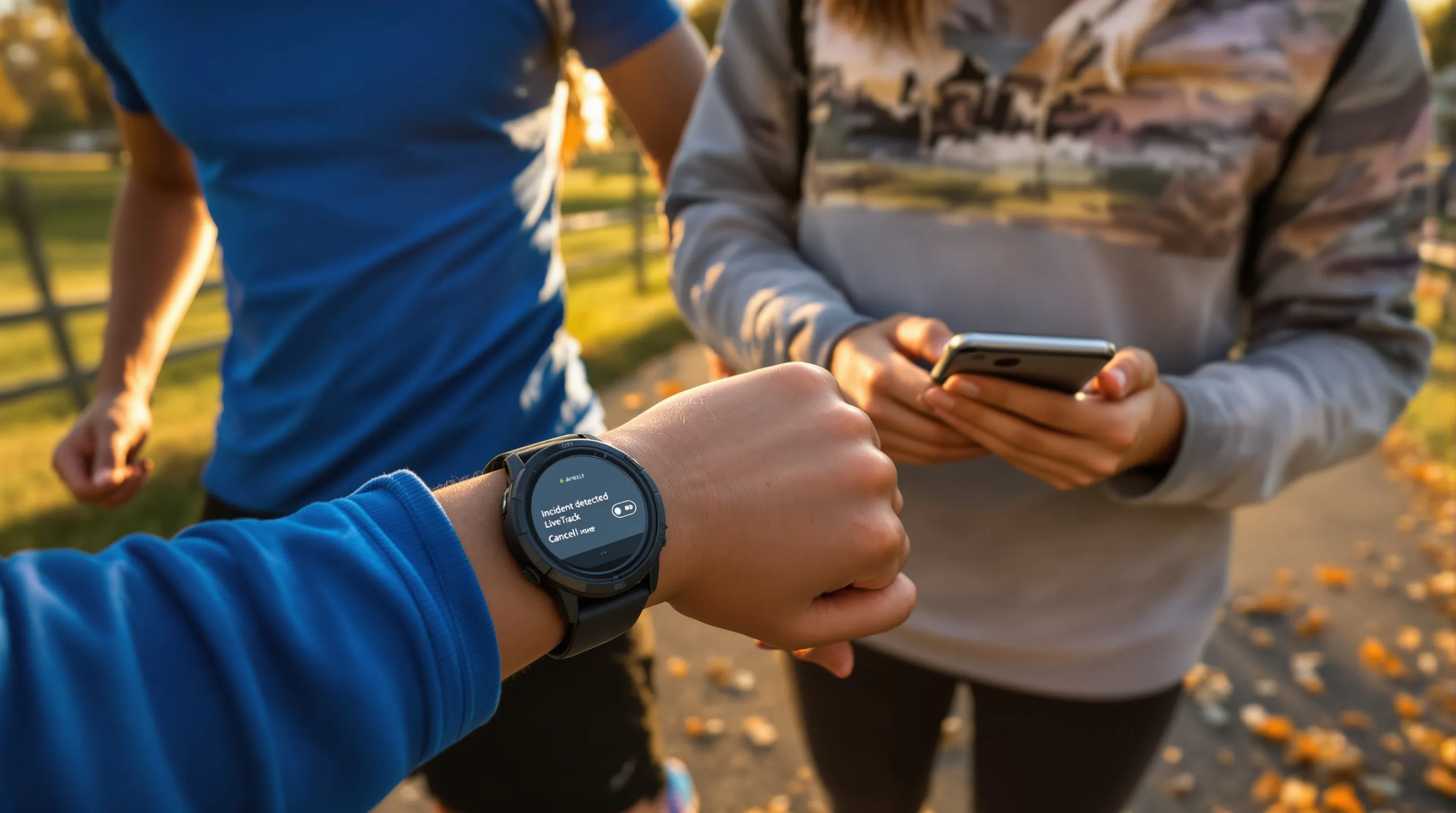
A quick, thoughtful setup makes the difference between a motivating tool and a buzzing distraction. Here’s what we recommend for day one.
Test Emergency Features And Contacts
- Set up emergency contacts in Garmin Connect, then enable incident detection on supported watches. Do a controlled test during a short outdoor walk or run, keep your teen ready to cancel the alert so contacts don’t get spammed.
- Try LiveTrack before a meet or long run. Confirm the phone stays with the teen and has cell data. Share the LiveTrack link with one trusted contact and verify location updates.
- Show your teen how to dismiss false detections quickly. A 5-second save here prevents awkward texts to the group chat.
Manage Notifications And Permissions
- Start minimal: allow calls and critical texts only. Add app alerts slowly so the watch doesn’t turn into a wrist-sized social feed.
- Disable previews on the watch to keep messages private in class.
- For younger teens, use the more controlled approach: Vivosmart/Vivofit with a parent-managed app. Review data-sharing settings and keep location sharing limited to trusted contacts.
- Revisit settings after the first week. If they’re ignoring alerts, or missing important ones, adjust volume, vibration strength, and which apps can ping the wrist.
Training And Everyday Use
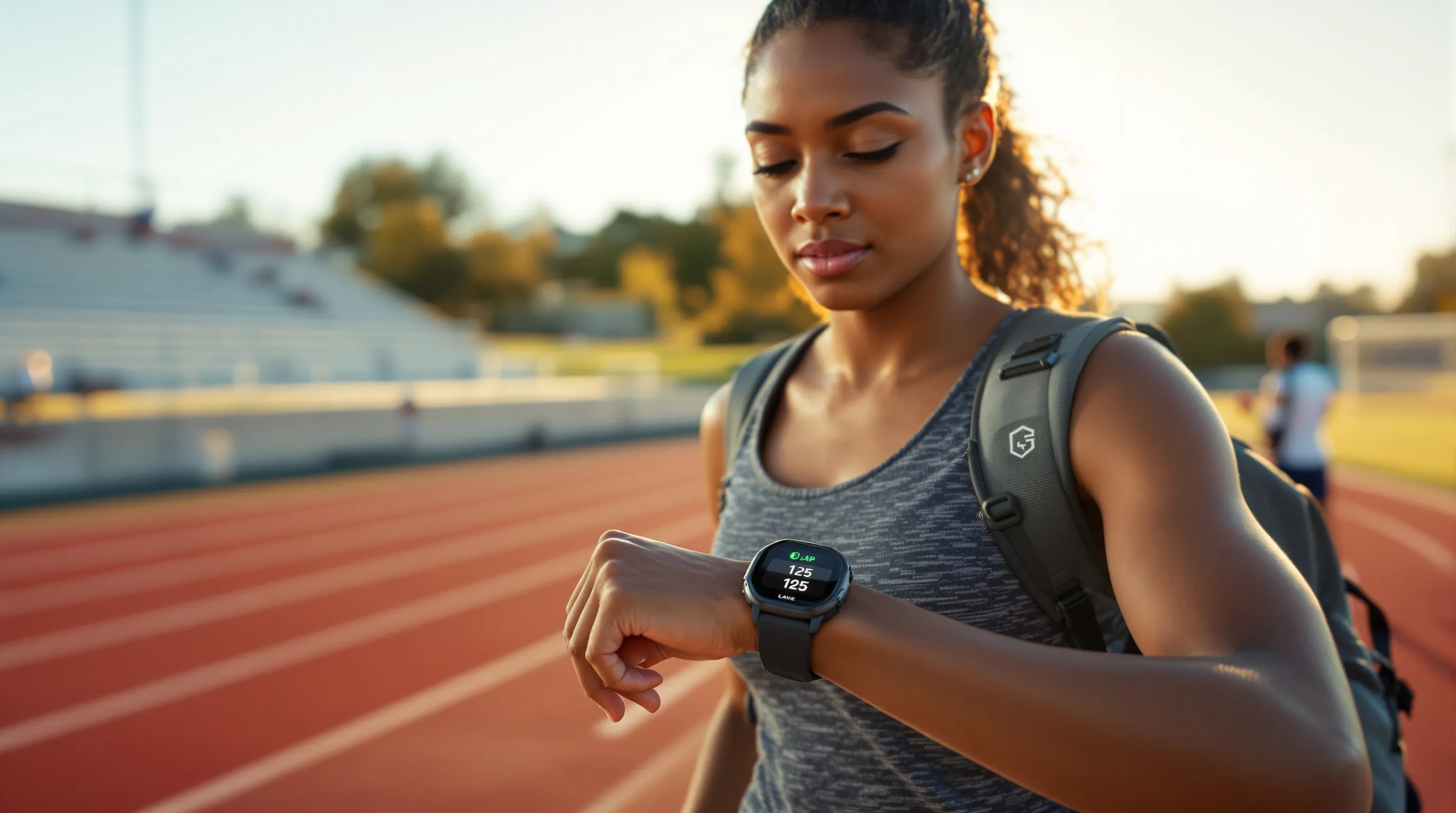
Garmin’s strength is how well it fits both school days and sports.
School Sports: Running, Team Sports, And PE
- Running: Accurate GPS, easy lap/split buttons, pace/heart-rate alerts. Forerunner 165’s bright screen is clutch for intervals on sunny tracks.
- Team sports: Use heart-rate zones, timers, and post-practice recovery to avoid burnout. Teens liked quick activity starts for soccer and basketball, press, go, done.
- Swimming and PE: Pool profiles auto-count laps: vibration alerts help with set pacing. In PE, activity tracking happens quietly, no flashy animations mid-class.
Everyday habits: Sleep and Body Battery teach balance. We watched a teen adjust bedtime during finals week after seeing their Body Battery drop to single digits, small change, big mood improvement. Steps and low-intensity goals keep rest days productive without pressure.
Charging rhythm: Most teens can charge once over the weekend, twice if they’re heavy on GPS workouts. Remind them to charge before a meet day, no one wants a dead watch on the starting line.
Conclusion
A Garmin watch for teens should feel like a coach, not a nag. Pick the model that suits their wrist and routine: Forerunner 165 for the balanced athlete, Forerunner 55 for budget-friendly training, Venu Sq 2 for style-forward wellness, or Vivosmart/Vivofit for minimal screens. Prioritize safety setup, keep notifications lean, and let the data nudge, not dictate, habits.
If you’ve tried a different setup that works for your teen, share it with us at SmartWatches.org. The best tips often come from the sideline parents and student athletes who test these watches where it matters: on real wrists, in real life.
